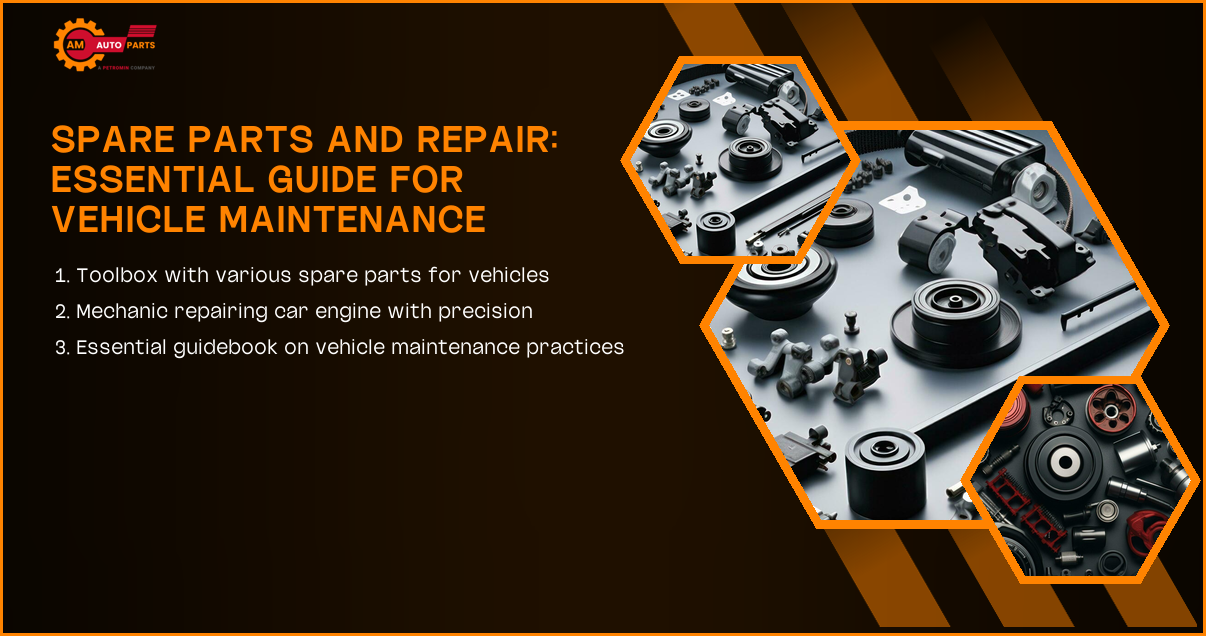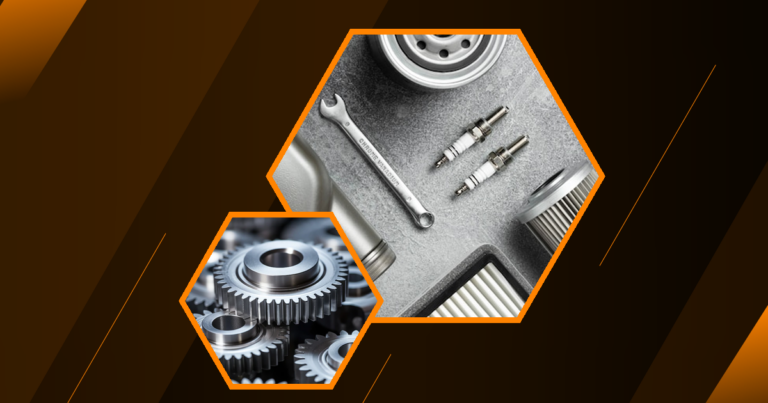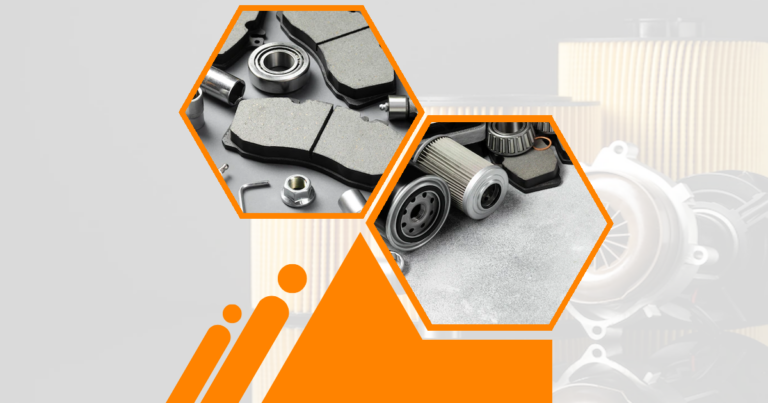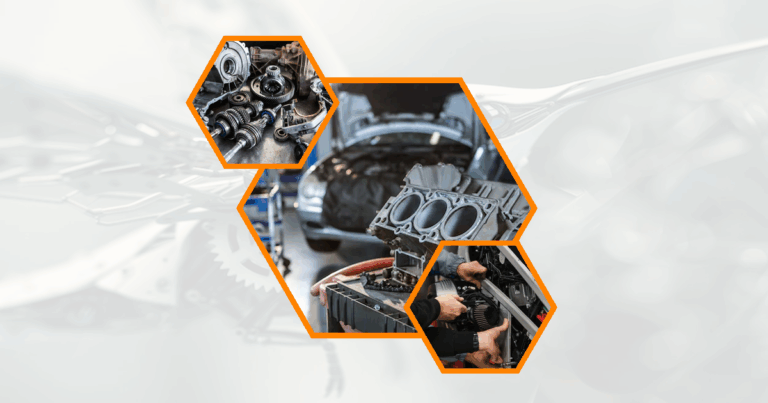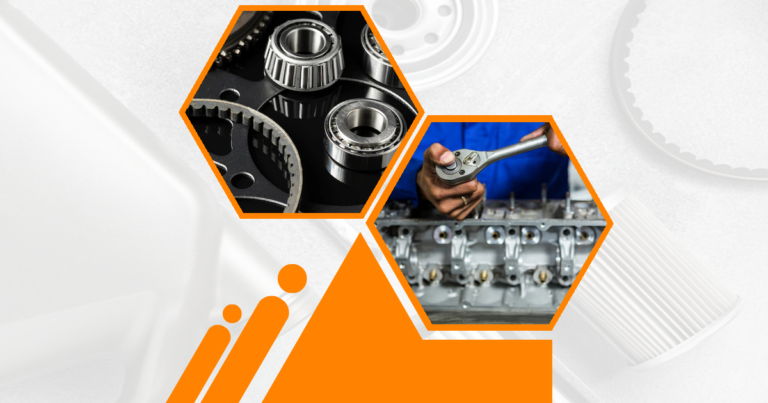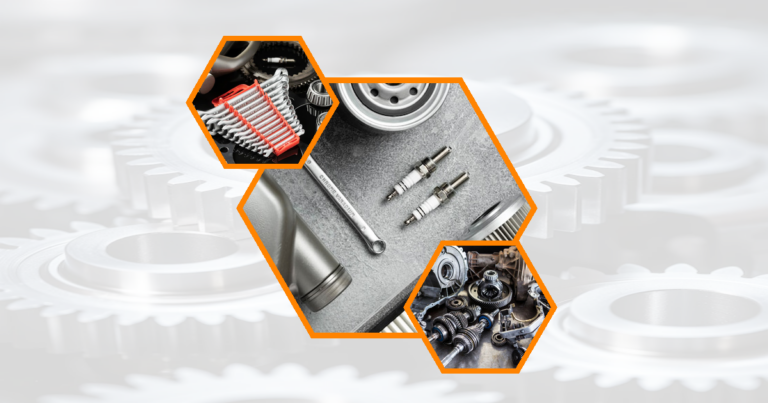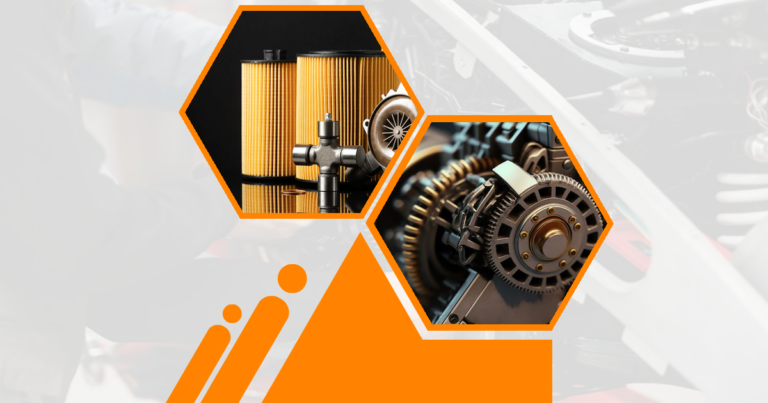Types of Automotive Components
Automotive components are the building blocks of any vehicle. They range from the engine and transmission to smaller parts like spark plugs and brake pads. Each component plays a crucial role in the overall functionality and safety of the vehicle.
- Engine Components : Pistons, crankshafts, and camshafts.
- Transmission Parts : Gears, clutches, and torque converters.
- Electrical Components : Batteries, alternators, and starters.
- Brake System Parts : Brake pads, rotors, and calipers.
Importance of Quality Replacement Parts
Quality replacement parts are essential for maintaining the performance and safety of your vehicle. Using substandard parts can lead to frequent breakdowns and even accidents. High-quality parts ensure longevity and reliability.
- Enhanced Performance : Quality parts improve vehicle efficiency.
- Safety : Reliable parts reduce the risk of malfunctions.
- Cost-Effectiveness : Fewer replacements mean lower long-term costs.
DIY vs. Professional Repairs
Deciding between DIY and professional repairs depends on the complexity of the issue and your skill level. While DIY repairs can save money, professional services offer expertise and warranty.
- DIY Repairs : Suitable for minor issues like oil changes and filter replacements.
- Professional Repairs : Necessary for complex problems like engine or transmission issues.
- Cost Comparison : DIY is cheaper but riskier; professional repairs are more expensive but reliable.
Sourcing Genuine Replacement Components
OEM vs. Aftermarket Parts
OEM (Original Equipment Manufacturer) parts are made by the vehicle’s manufacturer, while aftermarket parts are produced by third-party companies. Both have their pros and cons.
- OEM Parts : Guaranteed compatibility and quality.
- Aftermarket Parts : Often cheaper and more varied.
- Considerations : Warranty, quality, and cost.
Identifying Reliable Suppliers
Finding reliable suppliers is crucial for sourcing genuine parts. Look for suppliers with good reviews, certifications, and a solid return policy.
- Reputation : Check online reviews and ratings.
- Certifications : Look for industry-standard certifications.
- Return Policy : Ensure they offer a reasonable return policy.
Cost Considerations for Spare Parts
The cost of spare parts can vary widely based on brand, quality, and supplier. It’s essential to balance cost with quality to ensure long-term reliability.
- Budgeting : Allocate funds for essential parts.
- Quality vs. Cost : Don’t compromise on critical components.
- Supplier Comparison : Compare prices from multiple suppliers.
Common Vehicle Repairs and Required Parts
Engine Component Replacements
Engine repairs often require replacing worn-out components like spark plugs, timing belts, and fuel injectors. These parts are crucial for engine performance and efficiency.
- Spark Plugs : Essential for ignition.
- Timing Belts : Synchronize engine functions.
- Fuel Injectors : Ensure proper fuel delivery.
Brake System Maintenance
Brake system maintenance is vital for vehicle safety. Common repairs include replacing brake pads, rotors, and calipers.
- Brake Pads : Wear out over time and need regular replacement.
- Rotors : Can warp and require resurfacing or replacement.
- Calipers : Essential for proper brake function.
Suspension and Steering Repairs
Suspension and steering components like shocks, struts, and tie rods are crucial for vehicle stability and handling.
- Shocks and Struts : Absorb road impact.
- Tie Rods : Connect steering rack to wheels.
- Ball Joints : Allow for smooth steering.
Diagnostic Tools for Identifying Repair Needs
OBD-II Scanners and Their Uses
OBD-II scanners are essential tools for diagnosing vehicle issues. They can read error codes and provide real-time data on various systems.
- Error Codes : Identify specific issues.
- Real-Time Data : Monitor engine performance.
- User-Friendly : Easy to use for DIY enthusiasts.
Advanced Diagnostic Equipment
Advanced diagnostic tools like oscilloscopes and multimeters are used for more complex diagnostics. These tools require professional expertise.
- Oscilloscopes : Analyze electrical signals.
- Multimeters : Measure voltage, current, and resistance.
- Professional Use : Best used by trained technicians.
Interpreting Vehicle Warning Signs
Understanding vehicle warning signs can help you identify issues before they become severe. Common signs include dashboard warning lights, unusual noises, and performance issues.
- Dashboard Lights : Indicate specific problems.
- Unusual Noises : Can signal mechanical issues.
- Performance Issues : Reduced efficiency or power.
Maintenance Schedules and Preventive Repairs
Manufacturer-Recommended Service Intervals
Following manufacturer-recommended service intervals is crucial for maintaining vehicle health. These intervals are designed to prevent major issues and extend the vehicle’s lifespan.
- Oil Changes : Typically every 5,000 to 7,500 miles.
- Brake Inspections : Every 10,000 miles.
- Timing Belt Replacement : Every 60,000 to 100,000 miles.
Essential Spare Parts for Routine Maintenance
Routine maintenance often requires replacing essential spare parts like oil filters, air filters, and spark plugs. Keeping these parts in good condition ensures optimal performance.
- Oil Filters : Prevent contaminants from entering the engine.
- Air Filters : Ensure clean air intake.
- Spark Plugs : Essential for ignition.
Extending Vehicle Lifespan Through Proper Care
Proper care and maintenance can significantly extend the lifespan of your vehicle. Regular inspections and timely repairs are key.
- Regular Inspections : Identify issues early.
- Timely Repairs : Prevent minor issues from becoming major problems.
- Quality Parts : Use high-quality replacement parts.
The Role of Spare Parts in Vehicle Performance
Impact on Fuel Efficiency
High-quality spare parts can significantly impact your vehicle’s fuel efficiency. Components like air filters, spark plugs, and fuel injectors play a crucial role in optimizing fuel consumption.
- Air Filters : Ensure clean air intake for better combustion.
- Spark Plugs : Provide efficient ignition.
- Fuel Injectors : Ensure proper fuel delivery.
Safety Considerations
Using quality spare parts is essential for vehicle safety. Components like brake pads, tires, and suspension parts directly affect your vehicle’s ability to perform safely.
- Brake Pads : Essential for stopping power.
- Tires : Affect traction and handling.
- Suspension Parts : Ensure vehicle stability.
Environmental Effects of Quality Parts
Quality spare parts can also have positive environmental effects. Efficient components reduce emissions and improve fuel economy, contributing to a greener environment.
- Reduced Emissions : Efficient parts lower harmful emissions.
- Better Fuel Economy : High-quality parts improve fuel efficiency.
- Sustainability : Longer-lasting parts reduce waste.
Legal Aspects of Using Aftermarket Spare Parts
Warranty Implications
Using aftermarket parts can affect your vehicle’s warranty. It’s essential to understand the terms and conditions of your warranty before using non-OEM parts.
- Warranty Terms : Check for restrictions on aftermarket parts.
- Manufacturer Policies : Understand the implications.
- Documentation : Keep records of all repairs and parts used.
Safety Regulations and Compliance
Aftermarket parts must comply with safety regulations. Ensure that the parts you use meet industry standards to avoid legal issues and ensure safety.
- Industry Standards : Check for compliance.
- Safety Certifications : Look for certified parts.
- Legal Requirements : Understand local regulations.
Consumer Rights in Repairs
Consumers have rights when it comes to vehicle repairs. Understanding these rights can help you make informed decisions and avoid being overcharged or misled. Automotive tax percentage Streamline parts inventory helps keep track of all the pieces needed to make things It makes sure you have enough parts and don’t run out when building or fixing stuff
Wheel guides automobile help cars stay on the right path They make sure vehicles follow the correct track when driving Automotive counterfeit detection helps find fake car parts It keeps drivers safe by spotting copies of real car pieces
Crankshaft camshaft differentiation A crankshaft turns the up-and-down motion of pistons into spinning motion while a camshaft controls the opening and closing of engine valves Camshaft valve timing controls when engine valves open and close This timing affects how well the engine breathes and performs
Vibration control mechanisms help reduce shaking in machines and buildings These systems make things more stable and quiet by absorbing or redirecting unwanted movement Brake components compared Different parts of brakes are looked at side by side to see how they work and which ones are better for different types of cars and driving needs
- Right to Choose : You can choose your repair shop and parts.
- Fair Pricing : Ensure you’re not overcharged.
- Quality Assurance : Demand high-quality repairs and parts.
Economic Impact of the Spare Parts Industry
Market Size and Growth Projections
The spare parts industry is a significant contributor to the global economy. It was valued at USD 390.10 billion in 2020 and is expected to grow at a CAGR of 3.8% from 2021 to 2028.
- Market Value : USD 390.10 billion in 2020.
- Growth Rate : 3.8% CAGR from 2021 to 2028.
- Future Projections : Continued growth expected.
Job Creation in the Repair Sector
The repair sector is a major source of employment. The U.S. Bureau of Labor Statistics projects a 4% growth in employment for automotive service technicians and mechanics from 2019 to 2029.
- Employment Growth : 4% from 2019 to 2029.
- Job Opportunities : Increasing demand for skilled technicians.
- Economic Contribution : Significant impact on local economies.
Sustainability and Recycling Initiatives
Sustainability and recycling initiatives are becoming increasingly important in the spare parts industry. These initiatives help reduce waste and promote environmental responsibility.
- Recycling Programs : Encourage the reuse of parts.
- Sustainable Manufacturing : Focus on eco-friendly production.
- Environmental Impact : Reduced waste and emissions.
By following this comprehensive guide, you can ensure that your vehicle remains in top condition, saving you time and money in the long run. Whether you’re sourcing spare parts or performing repairs, understanding the intricacies of vehicle maintenance is crucial for optimal performance and safety.
Here are some states:
- The global automotive aftermarket size was valued at USD 390.10 billion in 2020 and is expected to grow at a CAGR of 3.8% from 2021 to 2028. (Source: https://www.grandviewresearch.com/industry-analysis/automotive-aftermarket )
- According to the Auto Care Association, the average age of vehicles on U.S. roads is 11.9 years, indicating a growing need for spare parts and repairs. (Source: https://www.autocare.org/government-affairs/research-and-data )
- The U.S. Bureau of Labor Statistics projects that employment of automotive service technicians and mechanics will grow 4% from 2019 to 2029. (Source: https://www.bls.gov/ooh/installation-maintenance-and-repair/automotive-service-technicians-and-mechanics.htm )
Frequently Asked Questions (FAQs)
What are the most common car parts that need replacement?
The most common car parts that need replacement include brake pads, oil filters, and spark plugs. These parts wear out over time and require regular maintenance to ensure vehicle safety and performance. Regular inspections can help identify when these parts need to be replaced.
How can I determine if a spare part is compatible with my vehicle?
To determine if a spare part is compatible with your vehicle, check the part number and compare it with your vehicle’s specifications. You can also consult your vehicle’s manual or contact the manufacturer for guidance. Using incompatible parts can lead to performance issues and potential damage.
Are aftermarket parts as good as OEM parts for repairs?
Aftermarket parts can be as good as OEM parts, but it depends on the manufacturer and quality. Some aftermarket parts offer better performance and durability at a lower cost. However, it’s essential to research and choose reputable brands to ensure reliability and safety.
What tools do I need for basic car repairs and spare part replacements?
For basic car repairs and spare part replacements, you’ll need a set of wrenches, screwdrivers, pliers, and a jack. Additionally, having a torque wrench and OBD-II scanner can be very helpful. These tools will allow you to perform most minor repairs and maintenance tasks.
How often should I inspect my vehicle for potential repair needs?
You should inspect your vehicle for potential repair needs at least once a month. Regular inspections can help identify issues early and prevent costly repairs. Pay attention to warning signs like unusual noises, dashboard lights, and changes in performance.
